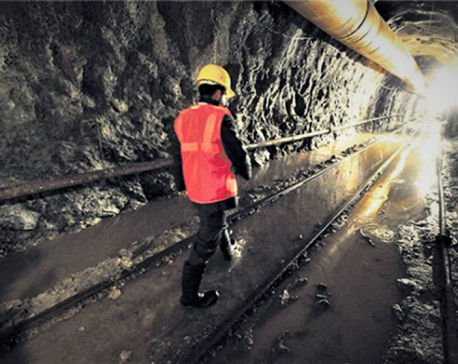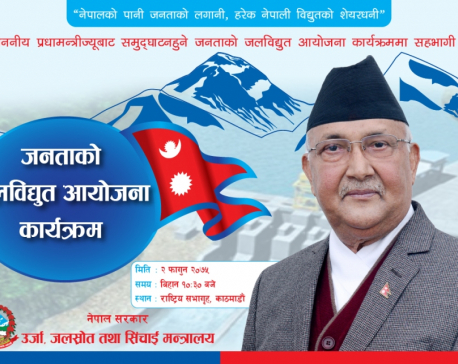
OR
In yet another deadly road accident in Sindhupalchok district at least one and half a dozen people have lost their lives and over 50 persons sustained injuries when a passenger bus en route to Kathmandu from Dolkha plunged into the Sunkoshi River. The cause of the accident is over-speeding and overloading as in most such cases of road accidents. All seats in the bus were occupied, and 20-25 passengers were standing, according to the survivors. Most of these passengers were returning to Kathmandu after Tihar celebrations. Sindhupalchok accident is the latest in the series of bus accidents happening in the country. Nearly every month, people lose their lives to road accidents. According to the data released by Nepal Police in May this year, road accidents killed 11,005 people across the country during the last five years and altogether 19,877 people were seriously injured in such accidents. The data shows that road accidents have been increasing every year—at the rate of 28 percent. These are the alarming records and yet the government bodies, including Nepal Police, have not been able to do much about controlling such accidents.
Overloading remains a norm in the buses plying to and from the cities to the rural villages. And this happens at troubling rate during the festival seasons. A bus conductor is seen to cram people inside the vessel like cargo, right in front of the police on duty and police do not seem to take action against such drivers. Besides, most rural roads remain in utter disrepair. In lack of proper maintenance and black-topping these roads stand as death traps. Likewise, the bus drivers and transport entrepreneurs still seem to think that they can get away if they pay some amount of money as bribe to the cops on duty. This is the main reason bus entrepreneurs are never discouraged from running the service as business as usual.
Road accidents can be prevented and must be prevented if proper regulations are formulated and they are strictly implemented. For example, in 2015, police banned travel on bus roofs. Today, except in some rural areas, this has been effectively implemented across the country. If the police enforce the rule that no bus shall be allowed to carry passengers more than permitted by the seat limits, it can help in minimizing the road deaths. Besides, buses should not be allowed to run the services along the roads which are not fit for driving. As things stand, most of the rural roads are not fit for driving and yet vehicles still run over them in rural areas. If Nepal Police need more human resources for controlling road accidents, it should recruit more personnel. The government should explore every possible way of minimizing road accidents. According to a recent estimate of World Health Organization road traffic crashes kill an average of 13 people and injure several others every day in Nepal. Likewise, Global Burden of Diseases report has revealed that road traffic injuries are the seventh leading cause of death in Nepal. How long will Nepal live with this stigma of road deaths?
You May Like This

House panel instructs govt to complete remaining tasks of Melamchi project
KATHMANDU, May 15: Development Committee of the Parliament on Wednesday instructed the government to complete the remaining tasks of the... Read More...

Govt mobilizing people’s money for hydropower development
KATHMANDU, Feb 14: The government is launching a program to mobilize funds of general public for hydropower development. ... Read More...

Development Committee asks govt to increase development expenditures to 90 percent
KATHMANDU, Dec 8: Today's meeting of the Development Committee (DC) under the Legislature-Parliament has directed the government to increase the... Read More...




Just In
- Govt receives 1,658 proposals for startup loans; Minimum of 50 points required for eligibility
- Unified Socialist leader Sodari appointed Sudurpaschim CM
- One Nepali dies in UAE flood
- Madhesh Province CM Yadav expands cabinet
- 12-hour OPD service at Damauli Hospital from Thursday
- Lawmaker Dr Sharma provides Rs 2 million to children's hospital
- BFIs' lending to private sector increases by only 4.3 percent to Rs 5.087 trillion in first eight months of current FY
- NEPSE nosedives 19.56 points; daily turnover falls to Rs 2.09 billion















Leave A Comment